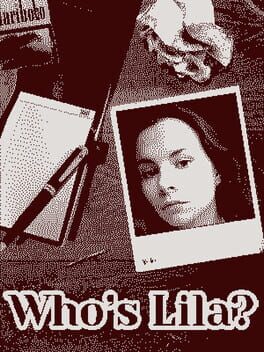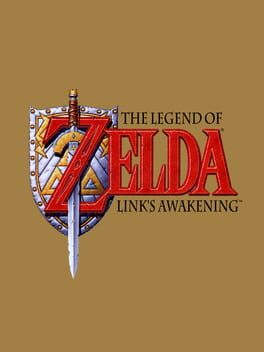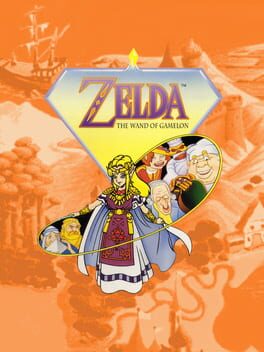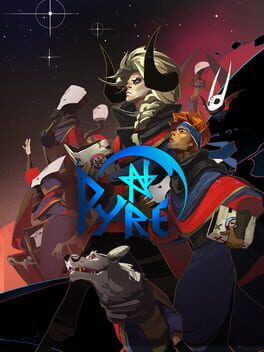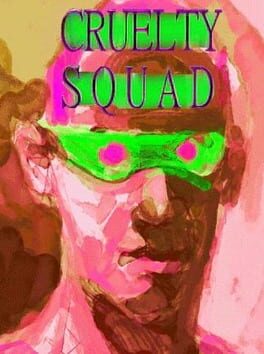xephitic
3 reviews liked by xephitic
Who's Lila?
2022
Sometimes, not knowing is best.
Who's Lila is instantly recognizable to people who have seen even a screenshot of it due to its striking, 1-bit visuals combined with its emphasis on character faces that leads it to dedicate 40% of the screen to their portraits. For a reason, too: its main mechanic, aside from the standard point-and-click adventure toolkit, has the player manipulating the protagonist's face in order to imprint upon it an emotion to be perceived by other characters in the game.
See, William has a very hard time demonstrating emotions himself, but he tries to get by in his life. It just so happens that one of his friends, Tanya Kennedy, has disappeared, and the suspicion of foul play means that Will has a long day ahead of himself, with a lot of hard questions to answer. Multiple actors are at play, from Tanya's friends seeking her out, to the police digging around, a cult, conspiracies... and there are numerous endings to William's story depending on both the player's choices over the course of the day and their performance during conversations with others.
...and it all falls flat. As much as the face manipulation makes for a fascinating visual experience with its distorted, uncanny expressions, it's utilized somewhat poorly. This being a game with multiple endings, one would expect a focus on exploring different routes stemming from different NPC reactions, but that's not quite the case. There's few scenes in the game and even fewer occasions in which the outcome of the scene branches depending on the face William puts on, and when it does, it's almost always a matter of picking one of six correct emotions and passing the scene or not, with the game sometimes inelegantly telling the player to load the autosave because they messed up and are now stuck.
Add to that the face prompts unpredictably changing the line William is about to say, the facial expressions mechanic quickly turn into a gamified routine of trial-and-error, which only adds to the already large amount of friction inherent to playing Who's Lila. While the game's indieness is, at first, endearing, it quickly becomes irritating, with bugs, crashes and softlocks being a common sight, not to mention typos. Additionally, several questionable technical and creative decisions make it even harder to focus on the game instead of on its problems.
Who's Lila uses dithered visuals to render its scenes and presents them through fixed camera angles -- two techniques that look amazing in isolation but work against one another as they are used here. Dithering removes detail from an image (see note 1), reducing its clarity, which means it works best on high resolutions, where there's a surplus of detail, or when there's enough motion that more cues (shadows, the movement of objects relative to another) will allow a viewer to make out the picture.
As for fixed camera angles, they're not just about fixing the camera in a corner, like Who's Lila mostly does, but about employing cinematography to transmit feelings and establish a flow to the player's movement. So when using static cameras, in a scene made of low quality assets, whose game view occupies just over half the game window... well, there's a key for showing overlay icons on top of interactable objects around William, and suffice to say any player who doesn't want to object-hunt for several hours will be making extensive use of it.
Furthermore, there's an ARG element to the game. At certain points, the player is led to, on a real world browser, pore over a Twitter account, as well as visit websites from in-game URLs and download and opening PDFs that contain information needed to progress through the game. In itself, this is not terrible, since one can do all this on their phone without having to tap out of the game, but does come off as cheaply made and superfluous. What makes the ARG a pain is that part of the ARG involves installing a DLC for the game, the Daemon. That's a second executable that communicates with the main game's and triggers in-game events that wouldn't happen without it on.
It's a cute idea that ends up costing many players -- especially Steam Deck users, to which, by the way, Who's Lila is marked as Steam Deck Verified -- hours of tinkering for getting the executables to actually detect each other correctly (see note 2), and then forces playing in windowed mode so one can have both windows visible at the same time. There was no reason for it to be implemented this way other than the novelty factor, as one of the endings literally tells the player to download the Daemon, even showing the Steam Store link onscreen -- a moment in which it could have been introduced as an in-game mechanic and saved unlucky people the headache.
Mind you, this is not an optional component: a handful of endings, as well as the true ending, are impossible to achieve without the Daemon up and running. This also means that introducing the Daemon later would have also made onboarding new players much easier as they would not be immediately jumped by what, as they'll find out later, are alternate routes leading to some of the story's more obscure endings.
Friction is the keyword for Who's Lila, a game filled with interesting ideas but marred by a largely flawed execution that makes the experience as a whole harder to enjoy. In a sense, it's fitting that one of the main themes of a story is the obsession with unsolved mysteries and unknown quantities: Who's Lila seemed much more interesting from the small clips lying around the internet and the general vibes it gives off. All of that said, those ideas and vibes are here, and for those who'd like to check them out, by all means, there's far worse ways to spend money on Steam than handing it to a solo indie dev somewhere. Just be prepared for plenty of jank.
Note 1: Strictly speaking, it's not dithering that's removing detail, but the posterization step that precedes it and is required to achieve the sort of visuals seen here. In older hardware, which supported displaying less colors, dithering was employed to make it look like an image had more colors than it did -- nowadays, since computers support many more colors, to achieve that sort of retro visual, one must posterize the image first, then dither.
Note 2: A while after I finished the game, LoneEmissary and nicole.ham on the Steam Forums worked out a way to fix the game on Steam Deck (and probably any Arch-based distro) without having to mess with the system on a deeper level, so if you're an unlucky person who wishes to play Who's Lila on that platform, check their posts out.
Who's Lila is instantly recognizable to people who have seen even a screenshot of it due to its striking, 1-bit visuals combined with its emphasis on character faces that leads it to dedicate 40% of the screen to their portraits. For a reason, too: its main mechanic, aside from the standard point-and-click adventure toolkit, has the player manipulating the protagonist's face in order to imprint upon it an emotion to be perceived by other characters in the game.
See, William has a very hard time demonstrating emotions himself, but he tries to get by in his life. It just so happens that one of his friends, Tanya Kennedy, has disappeared, and the suspicion of foul play means that Will has a long day ahead of himself, with a lot of hard questions to answer. Multiple actors are at play, from Tanya's friends seeking her out, to the police digging around, a cult, conspiracies... and there are numerous endings to William's story depending on both the player's choices over the course of the day and their performance during conversations with others.
...and it all falls flat. As much as the face manipulation makes for a fascinating visual experience with its distorted, uncanny expressions, it's utilized somewhat poorly. This being a game with multiple endings, one would expect a focus on exploring different routes stemming from different NPC reactions, but that's not quite the case. There's few scenes in the game and even fewer occasions in which the outcome of the scene branches depending on the face William puts on, and when it does, it's almost always a matter of picking one of six correct emotions and passing the scene or not, with the game sometimes inelegantly telling the player to load the autosave because they messed up and are now stuck.
Add to that the face prompts unpredictably changing the line William is about to say, the facial expressions mechanic quickly turn into a gamified routine of trial-and-error, which only adds to the already large amount of friction inherent to playing Who's Lila. While the game's indieness is, at first, endearing, it quickly becomes irritating, with bugs, crashes and softlocks being a common sight, not to mention typos. Additionally, several questionable technical and creative decisions make it even harder to focus on the game instead of on its problems.
Who's Lila uses dithered visuals to render its scenes and presents them through fixed camera angles -- two techniques that look amazing in isolation but work against one another as they are used here. Dithering removes detail from an image (see note 1), reducing its clarity, which means it works best on high resolutions, where there's a surplus of detail, or when there's enough motion that more cues (shadows, the movement of objects relative to another) will allow a viewer to make out the picture.
As for fixed camera angles, they're not just about fixing the camera in a corner, like Who's Lila mostly does, but about employing cinematography to transmit feelings and establish a flow to the player's movement. So when using static cameras, in a scene made of low quality assets, whose game view occupies just over half the game window... well, there's a key for showing overlay icons on top of interactable objects around William, and suffice to say any player who doesn't want to object-hunt for several hours will be making extensive use of it.
Furthermore, there's an ARG element to the game. At certain points, the player is led to, on a real world browser, pore over a Twitter account, as well as visit websites from in-game URLs and download and opening PDFs that contain information needed to progress through the game. In itself, this is not terrible, since one can do all this on their phone without having to tap out of the game, but does come off as cheaply made and superfluous. What makes the ARG a pain is that part of the ARG involves installing a DLC for the game, the Daemon. That's a second executable that communicates with the main game's and triggers in-game events that wouldn't happen without it on.
It's a cute idea that ends up costing many players -- especially Steam Deck users, to which, by the way, Who's Lila is marked as Steam Deck Verified -- hours of tinkering for getting the executables to actually detect each other correctly (see note 2), and then forces playing in windowed mode so one can have both windows visible at the same time. There was no reason for it to be implemented this way other than the novelty factor, as one of the endings literally tells the player to download the Daemon, even showing the Steam Store link onscreen -- a moment in which it could have been introduced as an in-game mechanic and saved unlucky people the headache.
Mind you, this is not an optional component: a handful of endings, as well as the true ending, are impossible to achieve without the Daemon up and running. This also means that introducing the Daemon later would have also made onboarding new players much easier as they would not be immediately jumped by what, as they'll find out later, are alternate routes leading to some of the story's more obscure endings.
Friction is the keyword for Who's Lila, a game filled with interesting ideas but marred by a largely flawed execution that makes the experience as a whole harder to enjoy. In a sense, it's fitting that one of the main themes of a story is the obsession with unsolved mysteries and unknown quantities: Who's Lila seemed much more interesting from the small clips lying around the internet and the general vibes it gives off. All of that said, those ideas and vibes are here, and for those who'd like to check them out, by all means, there's far worse ways to spend money on Steam than handing it to a solo indie dev somewhere. Just be prepared for plenty of jank.
Note 1: Strictly speaking, it's not dithering that's removing detail, but the posterization step that precedes it and is required to achieve the sort of visuals seen here. In older hardware, which supported displaying less colors, dithering was employed to make it look like an image had more colors than it did -- nowadays, since computers support many more colors, to achieve that sort of retro visual, one must posterize the image first, then dither.
Note 2: A while after I finished the game, LoneEmissary and nicole.ham on the Steam Forums worked out a way to fix the game on Steam Deck (and probably any Arch-based distro) without having to mess with the system on a deeper level, so if you're an unlucky person who wishes to play Who's Lila on that platform, check their posts out.
Animal Well
2024
Billy Basso, you beautiful bastard, you did it. How did one guy make this?
I've always been a victim of hyperbole. The internet told me that Animal Well was making people feel things. I listened to YouTube reviewers describe it as a game that reminds you of what gaming is all about. I read tweets calling it an obvious front-runner for GOTY and one of the best, most unique games in a very long time. I'm not about to say those people were speaking disingenuously--I truly believe the 5/5 reviews--but I do think that Animal Well is at its best when its understated and allowed to silently speak for itself.
Not unlike your biological mother, Animal Well is a short, tight, and gorgeous experience that manages to rapidly shift between quaint charm and instinctive terror at the drop of a hat. How Basso managed to jump scare me with a kangaroo that many times is beyond me. A friend described the artstyle as "Neon Wet" and that's probably the best short hand I can give for the game's look without really taking away some of its magic. Just go play the game if the visuals even remotely interest you.
Like all the best horror-adjacent games, your combat options here are extremely limited. Unlike those same horror games, Animal Well takes that lack of offensive capability and uses it to empower you. You are challenged to pause, and contemplate, and plan, and observe--to ask yourself "wait can I do that?" And you usually can. It takes a special game to offer you that sort of reward to meet your effort.
I'm not done with Animal Well. I rolled credits but there's so much game still here (think Fez or Tunic), but I do think I'm at a point where its socially-created hooks aren't as deeply in me. I can sit with it now and enjoy it. That may be how I should have approached the game from the start.
If you plan to play the game, I recommend that you don't go too quickly. Poke around. Mess with things that look out of place and let yourself consider Billy Basso's first game as its own world rather than a "GOTY contender" or "reason to game again." Be a little pensive dude and let yourself get swept up in it all. It's worth that.
I've always been a victim of hyperbole. The internet told me that Animal Well was making people feel things. I listened to YouTube reviewers describe it as a game that reminds you of what gaming is all about. I read tweets calling it an obvious front-runner for GOTY and one of the best, most unique games in a very long time. I'm not about to say those people were speaking disingenuously--I truly believe the 5/5 reviews--but I do think that Animal Well is at its best when its understated and allowed to silently speak for itself.
Not unlike your biological mother, Animal Well is a short, tight, and gorgeous experience that manages to rapidly shift between quaint charm and instinctive terror at the drop of a hat. How Basso managed to jump scare me with a kangaroo that many times is beyond me. A friend described the artstyle as "Neon Wet" and that's probably the best short hand I can give for the game's look without really taking away some of its magic. Just go play the game if the visuals even remotely interest you.
Like all the best horror-adjacent games, your combat options here are extremely limited. Unlike those same horror games, Animal Well takes that lack of offensive capability and uses it to empower you. You are challenged to pause, and contemplate, and plan, and observe--to ask yourself "wait can I do that?" And you usually can. It takes a special game to offer you that sort of reward to meet your effort.
I'm not done with Animal Well. I rolled credits but there's so much game still here (think Fez or Tunic), but I do think I'm at a point where its socially-created hooks aren't as deeply in me. I can sit with it now and enjoy it. That may be how I should have approached the game from the start.
If you plan to play the game, I recommend that you don't go too quickly. Poke around. Mess with things that look out of place and let yourself consider Billy Basso's first game as its own world rather than a "GOTY contender" or "reason to game again." Be a little pensive dude and let yourself get swept up in it all. It's worth that.
Zelda 2 is one of those games. How many times on this site alone have you seen it called the "black sheep" of the series? NES sequels always seem to have that happen to them, huh? While Zelda 2 certainly isn't great, it certainly is misunderstood. Attempting to discard it in favor of its older brother is thoughtless, and truth be told: your favorite Zelda game probably takes notable cues from this one.
So, yes, as a sequel to the original The Legend of Zelda, this game is certainly weird at first glance. 2D action?! RPG elements?! But as I see it, this is ultimately a continuation of the ideas the first game had. After all, Zelda was always an adventure game inspired by the various roleplaying media of the era—clearly, that hasn't changed. What has changed, however, is the scale. Zelda 2 is a much grander adventure, and every one of those (retroactive) "weird aspects" is to support this baseline.
The most refined part of the game is the combat, by far. Even before this game was Zelda, it was an action game. When the game zooms in and allows you to control the now master-swordsman Link in his prime, is Zelda 2 at its strongest.
Actual gameplay consists of a fighting game-like high-low system and various enemies that will challenge you to block and jump effectively. Study your enemy and strike when the time is right. The push and pull of battles can feel like an actual swordfight, and it's amazing they got it this right on their first try. Zelda as a series would continue to capture this, too— Ocarina of Time's own systems are directly inspired by Zelda 2.
Of course, for all the praise I sang for it, the main gameplay is far from perfect. I failed to mention palaces at all-- and that's because they're pretty uneventful. They're cute little mazes, sure, but at the end of the day, it's simply more combat with a different enemy set. The late game ones suffer the most-- they are typically unfair... and tangentially, the combat itself can be, too. While the high low system is good, the game not giving you ample time to use it is not. Moblins throwing untelegraphed 3 frame lows, blue Iron Knuckles and their absolutely horrendous beam spam, and whatever the hell is going on with those Chicken Knights at the end of the game. Good luck if you failed to find the up-stab...
And to speak of "finding" things, one of the larger criticisms of both NES Zeldas is their cryptic nature. During the first half, I disagree with this notion: the game tells you everything you need to know—and even things you don't. Towns are crucial, and not just for magic; townspeople are a vital source of information. Nearly no house in the game is useless.
And to speak of "finding" things, one of the larger criticisms of both NES Zeldas is their cryptic nature. During the first half, I disagree with this notion: the game tells you everything you need to know—and even things you don't. Towns are crucial, and not just for magic; townspeople are a vital source of information. Nearly no house in the game is useless.
And then you get to the second half of the game, where Zelda 2 throws all of that away for impossible to decipher hints—two particularly bad ones IN A ROW! New Kasuto, to this day, has got to be one of the most bullshit moments I have ever seen in a video game.
"Use the hammer to cut down this particular tree tile-- there's a required town there!"
It's unbelievable, and it seriously hampers what was before that a surprisingly clear game that further uses a connection to RPGs well. Again, Zelda as a series continued to use this aspect long past 2's time. The presentation of a larger Hyrule with a few settlements and an otherwise downright hostile wilderness is certainly reminiscent of another, more Wild entry.
Sure, Zelda 2 is the black sheep of the series. But to just mark it as a footnote of early installment weirdness and call it a day is wrong. It's far more important than that. Yet, my personal score for the game fails to reach high heights. I love Zelda 2, I truly do, but as a game it's ... unsatisfactory. It's hard to put the feeling into words.
But I hope maybe I've given this misunderstood entry some due justice it deserves.
So, yes, as a sequel to the original The Legend of Zelda, this game is certainly weird at first glance. 2D action?! RPG elements?! But as I see it, this is ultimately a continuation of the ideas the first game had. After all, Zelda was always an adventure game inspired by the various roleplaying media of the era—clearly, that hasn't changed. What has changed, however, is the scale. Zelda 2 is a much grander adventure, and every one of those (retroactive) "weird aspects" is to support this baseline.
The most refined part of the game is the combat, by far. Even before this game was Zelda, it was an action game. When the game zooms in and allows you to control the now master-swordsman Link in his prime, is Zelda 2 at its strongest.
Actual gameplay consists of a fighting game-like high-low system and various enemies that will challenge you to block and jump effectively. Study your enemy and strike when the time is right. The push and pull of battles can feel like an actual swordfight, and it's amazing they got it this right on their first try. Zelda as a series would continue to capture this, too— Ocarina of Time's own systems are directly inspired by Zelda 2.
Of course, for all the praise I sang for it, the main gameplay is far from perfect. I failed to mention palaces at all-- and that's because they're pretty uneventful. They're cute little mazes, sure, but at the end of the day, it's simply more combat with a different enemy set. The late game ones suffer the most-- they are typically unfair... and tangentially, the combat itself can be, too. While the high low system is good, the game not giving you ample time to use it is not. Moblins throwing untelegraphed 3 frame lows, blue Iron Knuckles and their absolutely horrendous beam spam, and whatever the hell is going on with those Chicken Knights at the end of the game. Good luck if you failed to find the up-stab...
And to speak of "finding" things, one of the larger criticisms of both NES Zeldas is their cryptic nature. During the first half, I disagree with this notion: the game tells you everything you need to know—and even things you don't. Towns are crucial, and not just for magic; townspeople are a vital source of information. Nearly no house in the game is useless.
And to speak of "finding" things, one of the larger criticisms of both NES Zeldas is their cryptic nature. During the first half, I disagree with this notion: the game tells you everything you need to know—and even things you don't. Towns are crucial, and not just for magic; townspeople are a vital source of information. Nearly no house in the game is useless.
And then you get to the second half of the game, where Zelda 2 throws all of that away for impossible to decipher hints—two particularly bad ones IN A ROW! New Kasuto, to this day, has got to be one of the most bullshit moments I have ever seen in a video game.
"Use the hammer to cut down this particular tree tile-- there's a required town there!"
It's unbelievable, and it seriously hampers what was before that a surprisingly clear game that further uses a connection to RPGs well. Again, Zelda as a series continued to use this aspect long past 2's time. The presentation of a larger Hyrule with a few settlements and an otherwise downright hostile wilderness is certainly reminiscent of another, more Wild entry.
Sure, Zelda 2 is the black sheep of the series. But to just mark it as a footnote of early installment weirdness and call it a day is wrong. It's far more important than that. Yet, my personal score for the game fails to reach high heights. I love Zelda 2, I truly do, but as a game it's ... unsatisfactory. It's hard to put the feeling into words.
But I hope maybe I've given this misunderstood entry some due justice it deserves.
